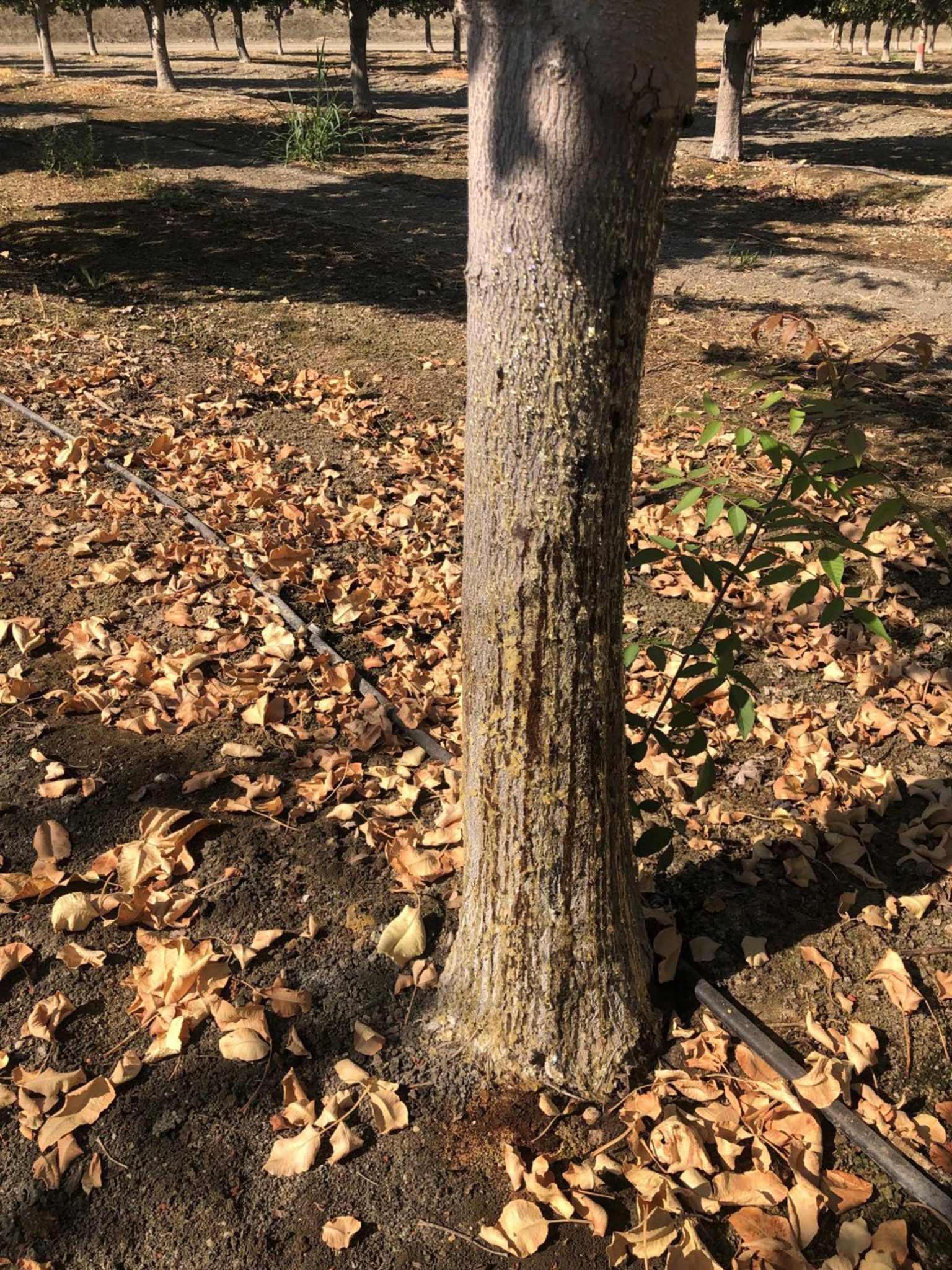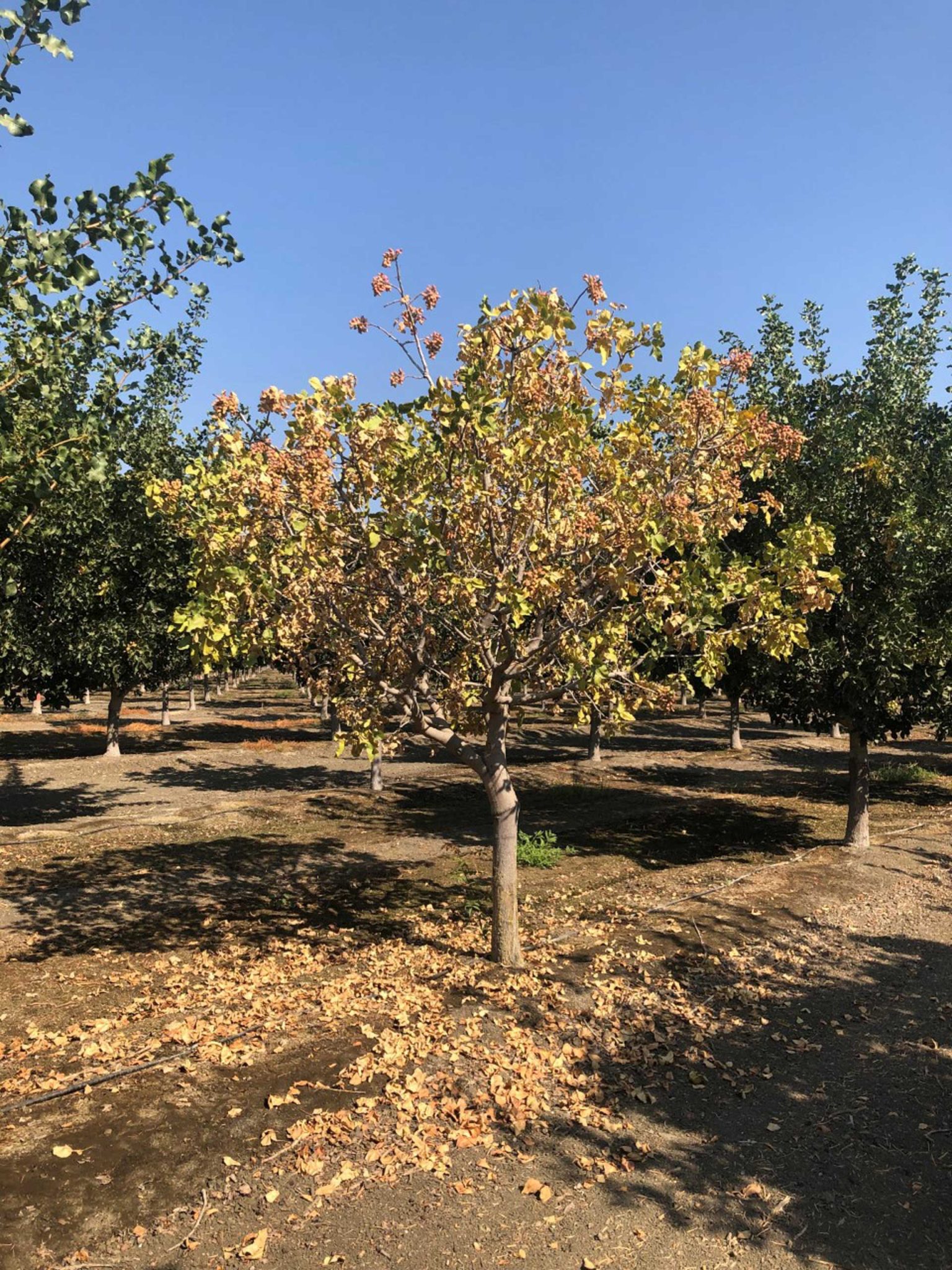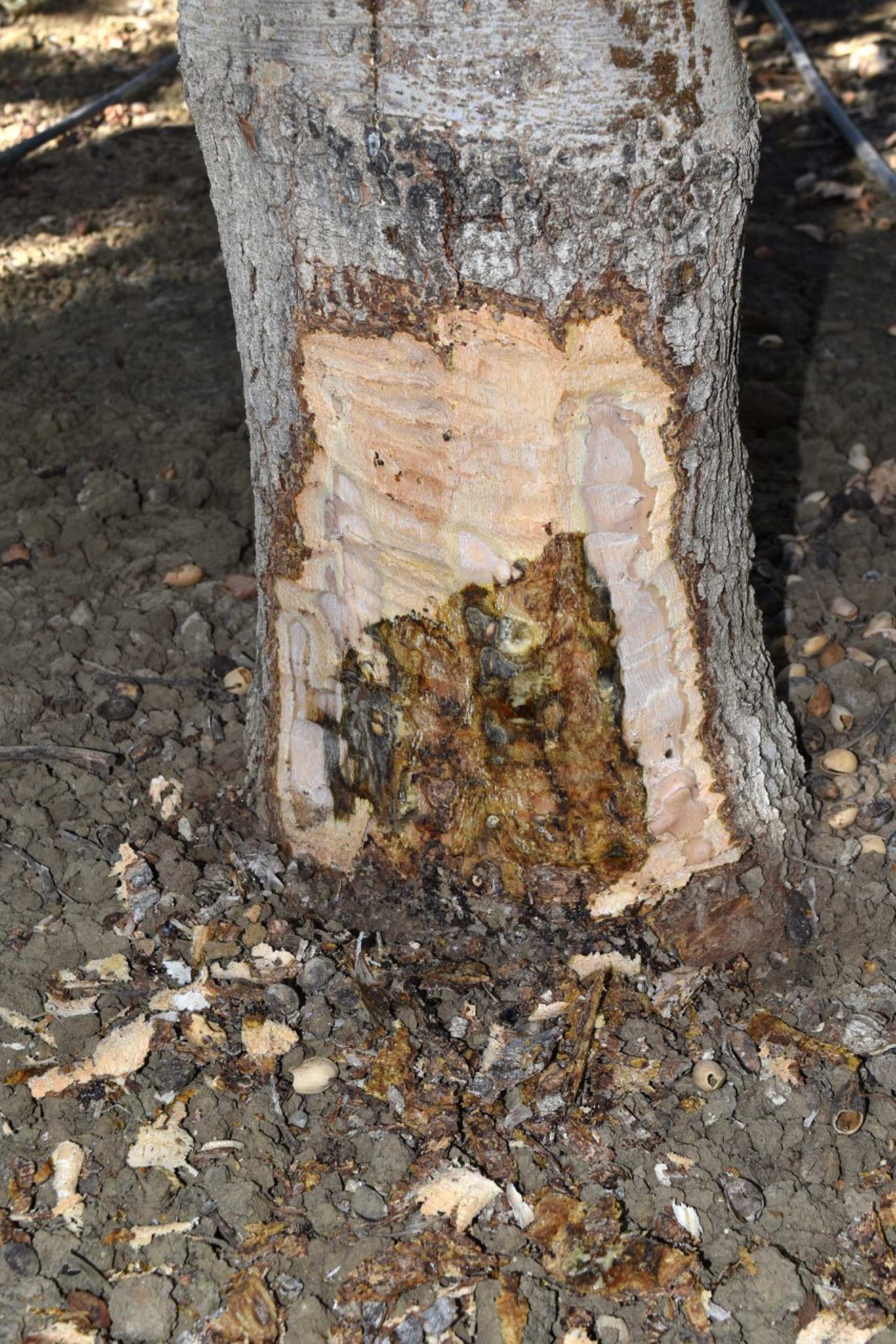
As more pistachios are planted on marginal ground researchers are noticing an increase in Phytophthora crown and root rot in California pistachios.
Speaking at the UC ANR Statewide Pistachio Day on Jan. 20, UC Davis plant pathologist Florent Trouillas, who is based at the Kearney Ag Center, said he would guess between 20% to 25% of pistachio plantings are on marginal soils that favor Phytophthora because of their propensity to create standing water.
“These are hardpan soils, high-saline soils, with poor water infiltration,” he said.
Last year, Trouillas visited eight pistachio orchards with trees of varying ages and types, all of which were collapsing under pressure from the disease.
“I have had many talks informing growers about this issue that we see is definitely on the rise,” Trouillas said.
Phytophthora pathogens, which are fungus-like organisms, often, but not always, are introduced to orchards through contaminated surface water. “It comes from canal and river water, in general,” he said. “That is the way they generally are introduced into an orchard.”
Phytophthora has not been found in well water, he said, but the pathogen also can infect orchards irrigated solely from well water, given that some of the Phytophthora pathogens are endemic and present in most soils.
“So, over-irrigation may lead to Phytophthora problems, including in orchards that are on well water only,” he said.
“These are diseases we find in soils with poor chemistry, poor water infiltration and drainage, such as heavy soils or hardpans and high-saline soils,” he said. “And, again, prolonged periods of high soil moisture are required for infection.”
Ripe Conditions
Phytophthora pathogens have resting structures call oospores that will germinate and produce sporangia when conditions are ripe, such as when soil is wet or moist. The sporangia contain zoospores that are capable of swimming through pores of soil and moving to tree roots when soil is flooded or saturated, leading to infection of roots and crowns of trees.
The most common, or apparent, symptoms appear as crown rot. “In the field, most often times, you will find crown rot,” Trouillas said. “Root rot is more difficult to diagnose.”
Crown rot symptoms appear as light-colored gumming at the base of a tree. When removing the bark, cankerous tissue will appear just below the soil line.
“These crown rots are very aggressive and fast-growing and can kill a tree over a growing season,” he said. “So, crown rot infection generally will lead to tree death.”
Additional symptoms include black discoloration in the rootstock. “That is where the pathogen grows,” he said, “right around the cambium area. As the pathogen develops around the circumference of the trees, then trees are girdled, explaining this relatively fast decline that we see with Phytophthora crown rot.
“It can kill trees of all ages, including second- and third-leaf trees as well as mature and very old trees, where usually in these old orchards there is oftentimes issues of soil compaction through the many passages of equipment,” he said.
Phytophthora is distributed pretty much throughout the pistachio-growing counties of California, Trouillas said, and of the species present in California, Phytophthora niederhauserri, is the most common.
Trouillas said he often sees Phytophthora in third- and fourth-leaf orchards when the irrigation line and the drip emitter is kept close to the trees. “That is generally a site where we see the disease,” he said, “so, start moving these lines away from the base of the tree starting in the second- and third-leaf of the orchard.”

Rootstock Tolerance
Much of the current research into Phytophthora in pistachios has focuses on analyzing rootstock tolerance.
“When we think disease management for Phytophthora, of course there is water management, site selection, chemical treatments, including phosphites,” he said. “But the main focus of our research in the last few years has been looking at rootstock tolerance.”
In the research, which has involved inoculating stems and roots of three commercial rootstocks, UCBI, PG1 and Platinum, Platinum has consistently outperformed the others. “Over several years, Platinum had smaller lesions when infected with Phytophthora, meaning it was the most tolerant rootstock when compared to PG1 and UCB1,” he said.
Also, when inoculating soil, Platinum had less plant death than the others, he said. And when analyzing loss of root mass, Platinum again appeared to perform better, “meaning that we had less root decay following inoculation,” he said.
An additional experiment with zoospores in flooded young trees again showed Platinum as the most tolerant to Phytophthora infection. “When we looked at crown rot in the zoospore experiment, there was no crown rot incidence in the Platinum, where almost 100% of the UCB1 and 60% of the PG1 had crown rot symptoms,” Trouillas said.
“So, it is very clear that Platinum is the rootstock of choice in a situation where Phytophthora crown rot in California may be an issue,” he added.

Verticillium Wilt
Preliminary data are showing that Platinum performed well against Verticillium wilt as well, he said, which is another soilborne disease of concern in California pistachios.
“When we looked at Platinum against Verticillium wilt, it performed as well as PG1,” he said. “So, it seems like, overall, we have definitely some promising results in terms of soilborne disease management when it comes to the selection of Platinum compared to the other rootstocks.”
To date, the data on Verticillium wilt has been compiled by inoculating plantlets of PG1, UCB1 and Platinum with the pathogen Verticillium dahliae and rating the inoculated trees for wilting symptoms from mild to highly severe and death of the trees.
“This is exciting data,” he said. “But keep in mind, these are preliminary results. We will repeat this type of experimentation in field conditions to confirm these findings.”
In general, if using tolerant rootstock, Verticillium wilt should not be a problem for pistachio orchards, Trouillas said. “However, the disease may arise if you are intercropping with cotton or tomatoes.
“So, management is based on using the proper rootstock, and if you were to plant following cotton or tomatoes, then you should collect a soil sample and send it to a specialized laboratory to assess the number of microsclerotia per gram of soil,” he said.
For almonds and pistachios, anything at or above three microsclerotia per gram of soil is considered high risk for the disease to show up in an orchard.
Also, he said, minimizing tree stress through maintenance of soil fertility and soil moisture will help trees tolerate the disease and encourage their recovery.
“Also, remember that potassium deficiency may increase tree loss to Verticillium,” he said.















